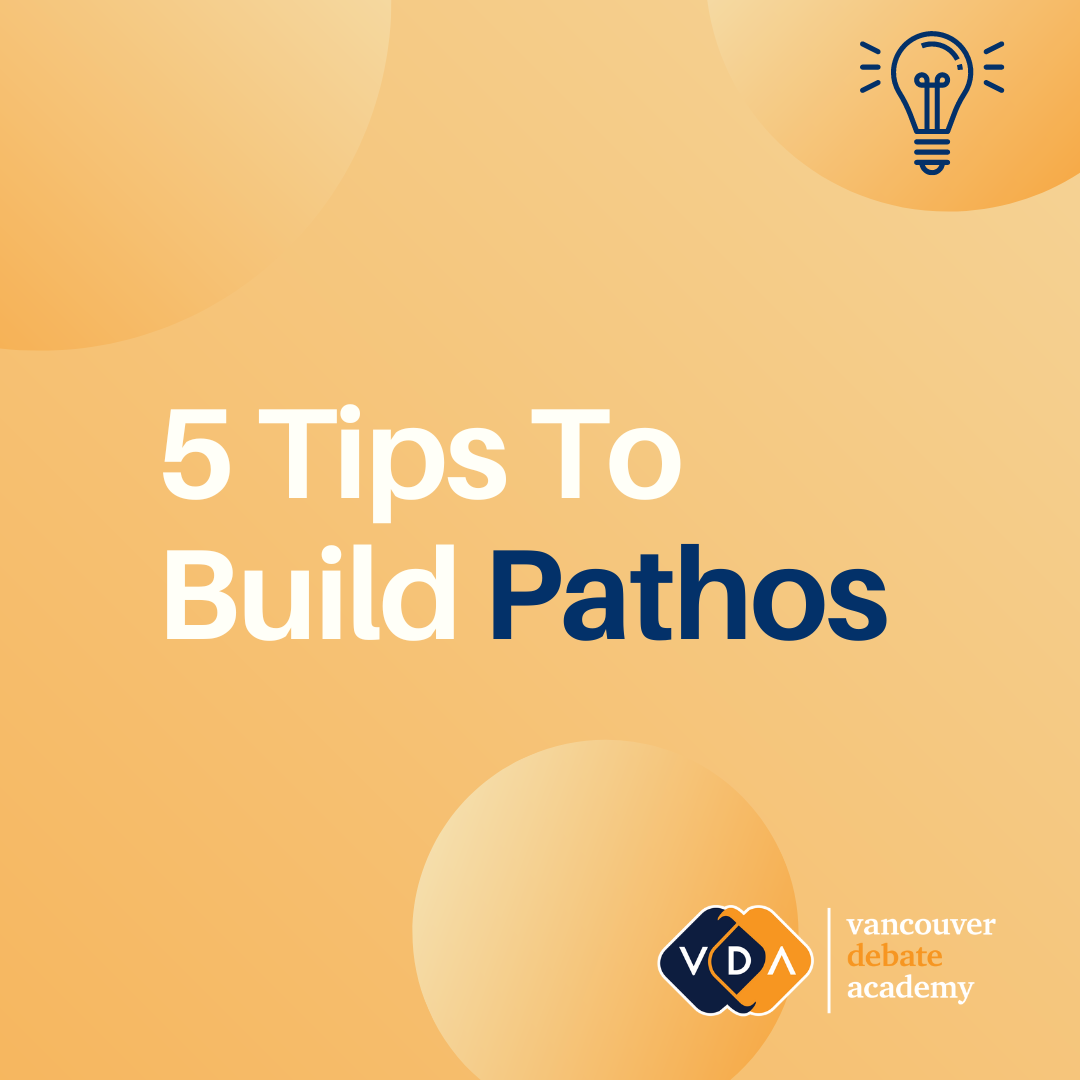5 Tips To Build Pathos

Despite what popular media will tell, you debates are about more than just facts and logic. Sure, having a strong argument with solid evidence is key, but to truly sway the audience, you need to tap into their emotions. That’s where pathos comes in— the ability to evoke feelings and connect with your listeners on a deeper level.
Here are 5 ways to build pathos during your next debate:

1. Unleash the Power of Words:
Your vocabulary is a powerful tool. Don’t just settle for bland synonyms— instead, choose words that pack a punch. Opposing a motion to disincentivize something? Instead of “encourage,” use “stifle” or “coerce.” Supporting increased funding for environmental protection? Highlight the potential for a “devastated” planet instead of a merely “polluted” one. Strategic word choice ignites emotions and strengthens the impact of your argument.
2. Find Your Voice! It’s Show Time!
A monotone delivery can lull even the most passionate listener to sleep. Vary your vocal pace and volume to keep the audience engaged. Speak with conviction when presenting your strongest points, and perhaps a touch of sadness or urgency when discussing potential negative consequences. Let your voice become an instrument, painting a picture with tone and inflection that resonates with the audience.
3. Make it Personal: A Story is Worth a Thousand Facts
Open your debate with a bang! Consider weaving a relatable human story into your introduction. “Imagine a single mother struggling to put food on the table…” or “Put yourself in the shoes of a young student who…” A powerful anecdote instantly grabs attention and sets the emotional tone for your debate. By connecting with the audience on a personal level, you’ll find them more receptive to your arguments.
4. Repetition is Your Friend (But Don’t Overdo It!)
Repetition is a powerful tool in persuasion. Identify a key point or phrase that encapsulates your central argument. Weave it back into your speech throughout the debate, but be mindful not to sound like a broken record. This strategic repetition creates a rhythm and reinforces your message in the audience’s mind.
5. Speak to Their Core Values: It’s All About What They Believe In
Every person has core values that guide their decisions. Identify the principle your argument aligns with: fairness, justice, equality, or perhaps environmental responsibility. Frame your points in a way that resonates with that value. Explain how your side of the debate best upholds that principle. By connecting your argument to something the audience already believes in, you create a powerful emotional bond.

Pathos is a powerful tool, and it should be used alongside strong logic and evidence for a truly persuasive debate. By incorporating these tips, you’ll be well on your way to winning hearts and minds in your next debate!

